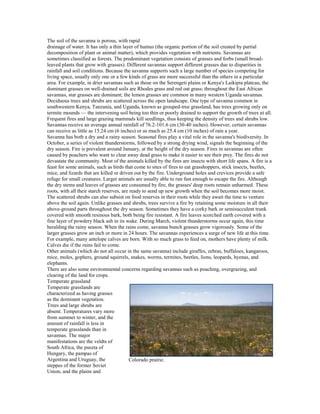The document discusses two main types of grasslands: savannas and temperate grasslands. Savannas are characterized by grassland with scattered trees and a wet and dry season, receiving 50.8-127 cm of annual rainfall. Fires play an important role in savanna biodiversity. Temperate grasslands are dominated by grasses and lack trees, have cooler summers and winters than savannas, and receive moderate rainfall of 50.8-88.9 cm annually. Both grassland types support various grasses and flowers and are home to many animal species.


